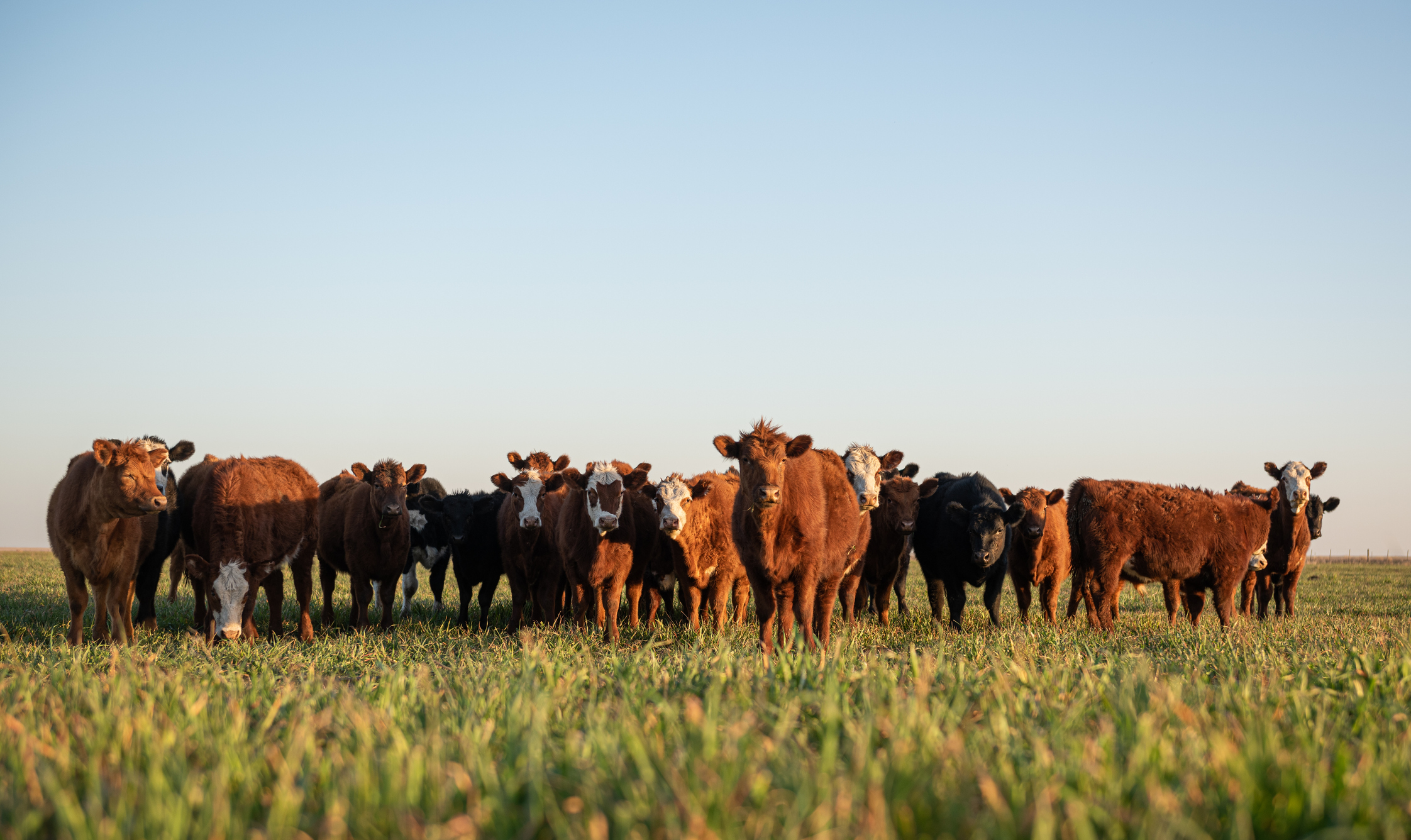Beef Cattle Feeding Guide
Learn more about feeding your beef cattle in Agrimaster’s comprehensive guide. We cover what your cows need to stay strong and healthy.
Learn more about feeding your beef cattle in Agrimaster’s comprehensive guide. We cover what your cows need to stay strong and healthy.

Like other livestock, beef cattle have specific nutritional needs. As a beef cattle owner, you need to know their dietary needs to keep your animals healthy and strong for the best performance possible. Agrimaster is here to help with this handy little primer on the basics of feeding beef cattle. Whether you’re an old pro who thinks they know it all, or you’re greener than grass in a spring pasture, take a couple of minutes to brush up on the basics.
Beef cattle need roughage – Most of a cow’s diet is grass and hay. A cow will typically eat four to five tons (of dry matter) forage per year.
As long as you have adequate pasture, it makes the most economic sense to let your cattle graze. Good performance is linked to the amount of forage a cow consumes, often expressed as Average Daily Gain, or ADG for short.
Now, a growing beef cow will eat the equivalent of about 2.5% of their body weight in forage each day. A good rule of thumb is that beef cattle need 8 to 10 pounds of roughage for every pound of gain.
Hay – You generally want 8% crude protein or higher in your hay. If you have access to a local lab, you can get the protein content of your hay tested, and you should.
If your cattle are confined, you’ll need to provide all the nutrients they need for growth and production, since they can’t graze.
If you’re shooting for animals with a weight of 700 lbs or more, you’ll need to provide them rations high in concntrates to gain weight faster. Processed concentrate cattle feed will give maximum benefit to beef cattle.
Normally, growing cattle over 700 pounds will need to receive rations relatively high in concentrates to gain weight faster. The concentrate cattle feed should be processed for maximum benefit to the animal.
We recommend using supplements containing vitamins, minerals, and protein (depending on what they are already getting from the forage) for the best beef cattle performance.
Since they’re ruminant, cows ferment their feed internally before digesting it. The rumen in a cow is essentially a 42-gallon compartment that contains feed, water, and bacteria.
The bacteria breaks down the fiber in the feed so the cow can get energy from it. This bacteria then continually gets washed out of the rumen to be digested in the intestines.
The bacteria provides much of the protein the cow needs. There are billions of bacteria in a cow’s stomach. When you feed a cow, you’re actually feeding the bacteria so they can do their work and then get digested by the cow.
For more tips on feeding your livestock and backyard farm animals, visit our blog!